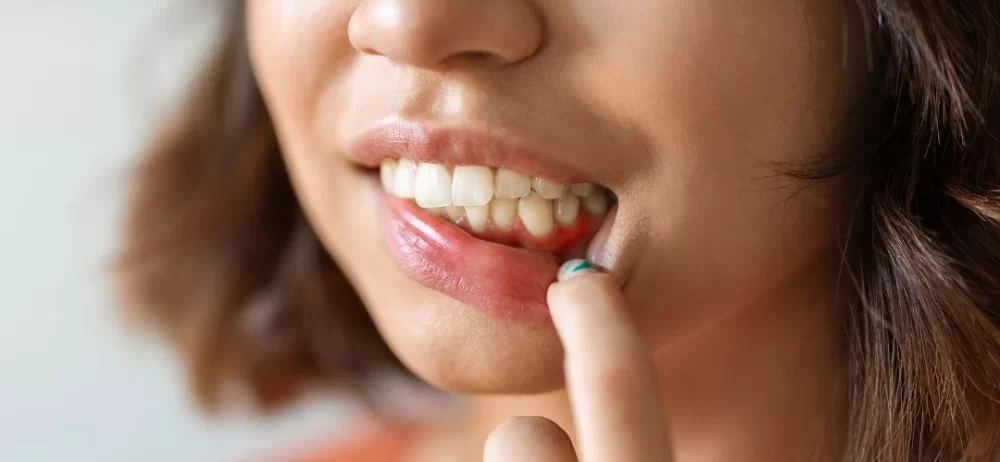
The Best Treatments for Receding Gums and Tooth Loss
Receding gums and tooth loss are common dental issues that can cause significant discomfort and affect both the functionality and aesthetics of your smile. Over time, gum recession can expose the sensitive part of your teeth, leading to increased tooth sensitivity, pain, and even tooth loss if not addressed properly. Many individuals experience this issue, and understanding how to manage and treat it effectively is crucial for maintaining overall oral health. In this article, I'll share insights into the best treatments for receding gums and tooth loss, including both preventive and restorative options that can help you regain confidence in your smile.
When I first started noticing the symptoms of receding gums, I didn’t think much of it. I attributed the discomfort to simply aging or perhaps not brushing my teeth properly. However, after a visit to my dentist, I learned that gum recession could lead to more serious complications, such as tooth decay and tooth loss, if not treated in time. That’s when I started researching the best treatments for receding gums and tooth loss and found several options that could help prevent further damage and restore my gum health.
1. Understanding the Causes of Receding Gums and Tooth Loss
Receding gums are often a result of various factors, including poor oral hygiene, gum disease (gingivitis or periodontitis), genetics, smoking, and even excessive brushing or using a hard-bristled toothbrush. As the gums recede, the protective tissue around your teeth starts to shrink, exposing the tooth roots and making them more vulnerable to decay, sensitivity, and loss.
In my case, the primary cause of my receding gums was gum disease, which had developed unnoticed over time. After learning that, I started paying more attention to my oral care routine and seeking professional treatments to prevent further damage. It’s crucial to understand the root cause of receding gums before choosing the appropriate treatment because the method will depend on whether the issue is due to lifestyle habits or a more serious underlying condition, like gum disease.
2. Scaling and Root Planing: A Non-Surgical Option
If you're dealing with gum disease-related recession, scaling and root planing is one of the most effective treatments recommended by dental professionals. This non-surgical procedure involves cleaning the teeth and gums thoroughly to remove plaque and tartar buildup below the gumline. The goal is to clean out the infected areas and smooth the roots of your teeth, making it harder for bacteria to reattach and cause further damage.
I underwent scaling and root planing at my dentist’s office, and it was a game-changer. Not only did it stop the progression of my gum recession, but it also significantly reduced my gum inflammation and discomfort. After the procedure, my gums began to heal, and the sensitivity I had been experiencing started to decrease. It’s important to follow up with a proper oral hygiene routine after scaling and root planing to ensure the best results.
3. Gum Grafting for Severe Recession
For those with advanced gum recession, gum grafting is often recommended. This surgical procedure involves taking tissue from another part of your mouth (such as the roof of the mouth) or using a donor graft to cover the exposed roots of the teeth. The grafted tissue helps to restore the gumline, improve the appearance of your gums, and reduce sensitivity.
During my research, I found that gum grafting is a highly effective solution for severe gum recession, especially if the recession is causing visible gaps between the teeth or if the exposed roots are at risk of decay. While the procedure requires a bit of recovery time, it can provide long-term relief and prevent further tooth loss.
4. Regenerative Procedures: Stimulating Gum Tissue Growth
In some cases, regenerative procedures may be used to stimulate the growth of new gum tissue. This can be done through the use of growth factors, bone grafting materials, or tissue-stimulating proteins that encourage the body to heal and regrow the lost gum tissue. These procedures are typically used in conjunction with scaling and root planing or gum grafting, especially for patients with significant bone loss.
I’ve heard of people who had great success with regenerative treatments, particularly those who were dealing with both gum recession and bone loss. Regenerative procedures work well for patients who may not be ideal candidates for traditional gum grafting. These treatments can offer a chance to restore not only the gum tissue but also the underlying bone structure, improving both the appearance and function of the gums and teeth.
5. Tooth Restoration Options for Tooth Loss
If gum recession has progressed to the point of tooth loss, restorative treatments are necessary. Dental implants are one of the best solutions for replacing missing teeth caused by severe gum recession or other factors. Unlike bridges or dentures, dental implants are surgically placed into the jawbone, providing a permanent and stable solution that mimics the natural structure and function of your teeth.
I considered dental implants for one of my missing teeth, and the process was surprisingly straightforward. The implant is placed into the bone, and once it fuses with the bone (a process called osseointegration), a crown is placed on top. The result was a perfectly restored tooth that blends seamlessly with my natural teeth. Dental implants are an excellent option for people who want to restore their smile after losing teeth due to gum disease or recession.
6. Preventing Further Gum Recession and Tooth Loss
Preventing further gum recession and tooth loss is just as important as treating the existing issue. Maintaining good oral hygiene is the foundation of any gum treatment plan. Brushing with a soft-bristled toothbrush, flossing regularly, and using a mouthwash can help keep your gums healthy and prevent the buildup of plaque and tartar. It’s also essential to visit your dentist regularly for professional cleanings and checkups to detect and address any early signs of gum disease or tooth loss.
In addition to good oral hygiene, lifestyle changes can also help prevent gum recession and tooth loss. Quitting smoking, reducing alcohol consumption, and eating a balanced diet rich in vitamins and minerals can improve the health of your gums. After learning all this, I made several changes to my habits, and I’ve noticed that my gums are healthier, and my risk of further tooth loss has decreased significantly.
7. Why You Should Consult a Dentist for Gum Recession
If you notice that your gums are receding or you’re experiencing tooth sensitivity, it’s important to consult a dentist as soon as possible. Early intervention can help stop the progression of gum recession and prevent tooth loss. While some treatments can be done at home, a dentist can provide the necessary treatments, such as scaling and root planing or gum grafting, to effectively address the issue and restore your gum health.
When I visited my dentist, I was amazed at how quickly they identified the cause of my receding gums and provided me with a personalized treatment plan. They also educated me on the importance of regular checkups and professional cleanings, which played a huge role in improving my gum health over time. If you’re struggling with receding gums or tooth loss, don’t wait. A professional dental consultation can help guide you through the right treatment options for your specific needs.
If you are interested in learning more about receding gums and tooth restoration, or if you want to take the first step in restoring your smile, visit Dentistry Toothtruth for more information.







 American Dental Hicksville2.0 (183 review)
American Dental Hicksville2.0 (183 review) Encore Dental of Toms River - An Affiliate of The Smilist4.0 (562 review)
Encore Dental of Toms River - An Affiliate of The Smilist4.0 (562 review) South Jersey Dental0.0 (0 review)
South Jersey Dental0.0 (0 review) Hanover Dental4.0 (337 review)
Hanover Dental4.0 (337 review) Nuttall Smiles4.0 (424 review)
Nuttall Smiles4.0 (424 review) Aspen Dental - Portland, ME4.0 (537 review)
Aspen Dental - Portland, ME4.0 (537 review) The Importance of Oral Health Education During Pregnancy for a Healthy Pregnancy
The Importance of Oral Health Education During Pregnancy for a Healthy Pregnancy Best Tips for Brushing Your Teeth Properly for Healthy Gums: Essential Techniques for Oral Health
Best Tips for Brushing Your Teeth Properly for Healthy Gums: Essential Techniques for Oral Health Why Skipping Dental Checkups Can Lead to Bigger Oral Health Problems
Why Skipping Dental Checkups Can Lead to Bigger Oral Health Problems Advantages of Porcelain Dental Restorations
Advantages of Porcelain Dental Restorations How Can Diabetes Cause Tooth and Gum Problems? Preventing and Managing Oral Health Issues
How Can Diabetes Cause Tooth and Gum Problems? Preventing and Managing Oral Health Issues Healthy Habits for Promoting Good Oral Health and Hygiene: Tips for a Healthy Smile
Healthy Habits for Promoting Good Oral Health and Hygiene: Tips for a Healthy Smile